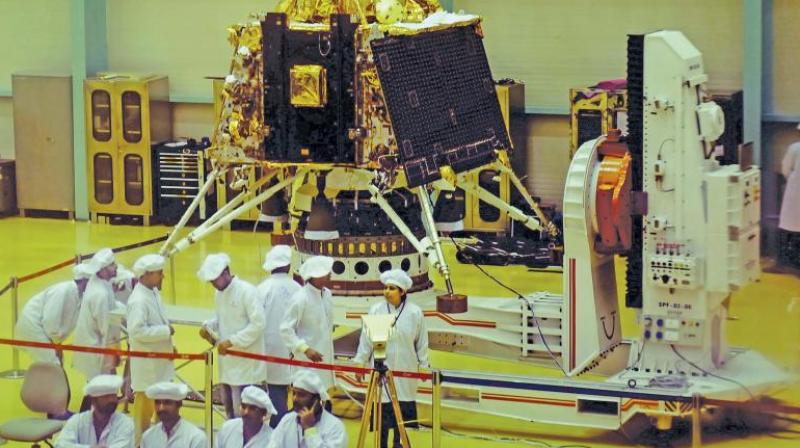Isro: Better safe than sorry

Launching rockets into space is a high-stakes, unforgiving business with razor-thin margins between success and failure, and catastrophic consequences when things go wrong. Sometimes, the smallest problems can doom a satellite — and in the most tragic circumstances, an entire crew. With rockets, it’s always better to be safe than sorry, and this is precisely the reason why Indian space scientists slammed the brakes with less than an hour to go for commencement of Chandrayaan-2’s journey into space onboard the gigantic GSLV-Mk III rocket in the early hours of Monday.
First reports point to a snag in the cryogenic upper stage of the rocket. Cryogenic engines are sine qua non to hoist heavy satellites into space but involve complex and risky processes of using liquid oxygen and liquid hydrogen as the fuel at freezing temperatures, to propel rockets deep into space along with satellites weighing three tons and more. These engines, also used on projects of sending man into space, will be employed by Isro to accomplish Gaganyaan, the mission that plans to send an Indian crew into space, onboard a Made-in-India rocket by 2021.
A saga of three decades of R&D by Isro’s scientists and engineers, marred by a couple of setbacks, illustrates the importance of cryogenic technology, which, incidentally, could not be acquired from Russia owing to pressure from the United States on grounds that it violated MTCR (missile technology control regime) laws. With their vast experience of cracking problems related to cryogenic engines as well as the technology, space scientists are confident of announcing a new date for Chandrayaan-2’s voyage onboard GSLV Mk III within a week. The new date, however, will also depend on phases when the distance between Moon and earth shrink. So, Team Isro will look at either July-end or September for the launch of Chandrayaan-2.

